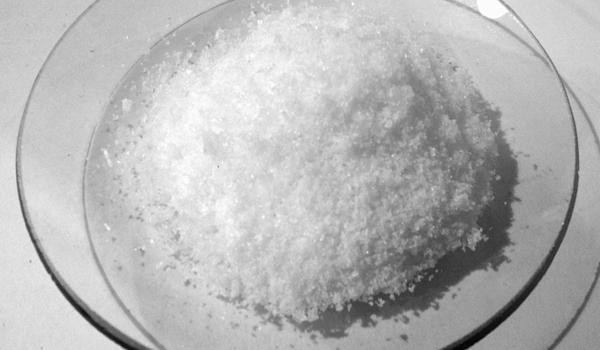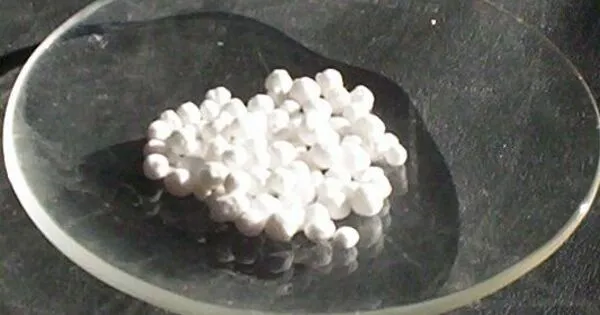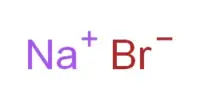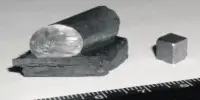Potassium bromide (KBr) is a salt that was widely used as an anticonvulsant and sedative in the late nineteenth and early twentieth centuries, with over-the-counter use in the United States lasting until 1975. It is also known as potassium bromide salt, kalii bromidum, and tripotassium tribromide. The bromide ion is responsible for its action (sodium bromide is equally effective). Potassium bromide is a veterinary drug that is used to treat epilepsy in dogs.
Potassium bromide, also known as KBr, is a common anticonvulsant drug used to treat canine and feline epilepsy. This is frequently used in conjunction with Phenobarbital, but it can also be used alone to control seizure activity.
Properties
Potassium bromide appears as odorless colorless crystals or white crystalline powder or white granular solid with a pungent bitter saline taste.
- Chemical formula: KBr
- Molar mass: 119.002 g/mol
- Appearance: white solid
- Odor: odorless
- Density: 2.74 g/cm3
- Melting point: 734 °C (1,353 °F; 1,007 K)
- Boiling point: 1,435 °C (2,615 °F; 1,708 K)
- Solubility in water: 535 g/L (0 °C); 1020 g/L (100 °C)
- Solubility: very slightly soluble in diethyl ether
- Solubility in glycerol: 217 g/L
- Solubility in ethanol: 47.6 g/L (80 °C)

Chemical properties
Potassium bromide, a typical ionic salt, is fully dissociated and near pH 7 in aqueous solution. It serves as a source of bromide ions. This reaction is important for the manufacture of silver bromide for photographic film:
KBr(aq) + AgNO3 (aq) → AgBr(s) + KNO3 (aq)
Aqueous bromide Br– also forms complexes when reacted with some metal halides such as copper(II) bromide:
2 KBr(aq) + CuBr2 (aq) → K2[CuBr3](aq)
Production and Preparation
One traditional method of producing KBr is to react potassium carbonate with iron (III, II) bromide, Fe3Br8, which is created by treating scrap iron in water with excess bromine. The reaction of potassium carbonate with an iron(III, II) bromide, Fe3Br8, produced by treating scrap iron in water with excess bromine is a traditional method for producing KBr:
4 K2CO3 + Fe3Br8 → 8 KBr + Fe3O4 + 4 CO2
Potassium bromide is a white crystalline powder under normal conditions. It is freely soluble in water but not in acetonitrile. Potassium bromide tastes sweet in a dilute aqueous solution, bitter at higher concentrations, and salty at even higher concentrations. These effects are primarily due to the properties of the potassium ion—at any concentration, sodium bromide tastes salty. In high concentration, potassium bromide strongly irritates the gastric mucous membrane, causing nausea and sometimes vomiting (a typical effect of all soluble potassium salts).
Reactions
At a near pH value of seven, potassium bromide gets fully dissociated thus, it is an ionic solid. This reaction plays an important role in the manufacture of silver bromide for photographic films. The chemical equation for the same is shown as:
KBr(aq) + AgNO3(aq) → AgBr(s) + KNO3(aq)
The reaction of bromide in its aqueous form with metal halides produces complex.
For example, the reaction of potassium bromide and copper(II) bromide produces a complex compound. The chemical equation for the same is given as;
2 KBr(aq) + CuBr2(aq) → K2[CuBr4](aq)
Uses
- Potassium Bromide is used to manufacture photographic papers and plates.
- It is used as a laboratory agent.
- It is used as a heat stabiliser for nylon.
- It is used as a Sedative.
- It is used as an anticonvulsant.
- It is used in the water treatment of aquariums
- It is used to manufacture chemicals.
Health Hazards
- Symptoms include nausea, ataxia, coma, irritability, and mental confusion.
- It has the potential to cause mania, skin rashes, drowsiness, and hallucinations.
- It can also result in neurological symptoms, increased spinal fluid pressures, death, vertigo, and sensory disturbances.
















